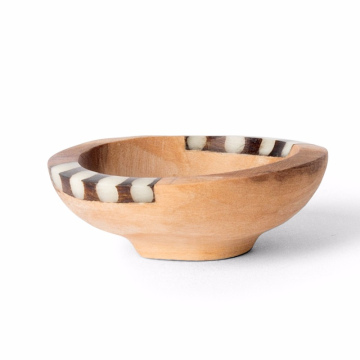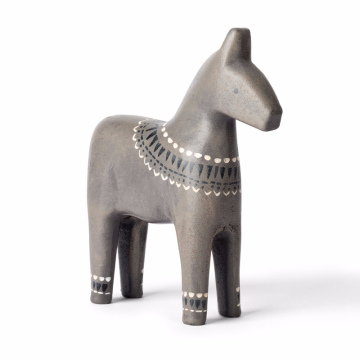Introduction to Spanish Cuisine
Spanish cuisine is a remarkable tapestry woven from a diverse array of regional flavors, ingredients, and culinary traditions that reflect the country's rich history and vibrant culture. Each region of Spain brings its own unique contributions to the culinary landscape, heavily influenced by geography, climate, and historical interactions. With the Pyrenees to the north, the Atlantic Ocean to the northwest, and the Mediterranean Sea to the south, the geographic diversity plays a critical role in shaping local ingredients. For instance, coastal towns boast an abundance of fresh seafood, while mountainous regions tend to favor hearty, robust dishes featuring game and dairy products.
The climate across Spain further enhances these culinary variances. The hot, dry summers in regions like Andalusia lend themselves to the cultivation of olives, almonds, and tomatoes, elemental components in many traditional dishes. Conversely, the cooler, wetter northern areas, such as Galicia, are known for their lush landscapes that produce exquisite seafood and a variety of vegetables. These natural elements contribute significantly to the flavors found in Spanish cooking, as well as local customs and traditions that echo through generations.
Cultural influences have also played a pivotal role in defining Spanish cuisine. Throughout history, the interactions with various civilizations, including the Moors and Romans, have introduced an array of spices, techniques, and ingredients. Family recipes handed down through generations and the artistry found in local markets encapsulate the essence of Spanish culinary practices. These markets are not just places to buy fresh produce but serve as community hubs where traditions flourish, and the love for cooking and sharing food thrives. As we delve deeper into Spain's culinary heritage, the interplay of these elements will reveal the complexities and delights of this vibrant cuisine.
Northern Delicacies: The Heart of Basque and Galician Flavors
The northern regions of Spain, particularly the Basque Country and Galicia, are renowned for their rich and diverse culinary offerings. This area boasts an impressive array of flavors that reflect not only local traditions but also the profound influence of the Atlantic Ocean on its gastronomy. One of the cornerstones of Basque cuisine is pintxos, a style of eating defined by small snacks typically served on bread, often topped with various ingredients ranging from seafood to cured meats. This social dining experience invites both locals and visitors to indulge in a variety of flavors in a casual setting.
Seafood plays an integral role in the diets of both the Basque Country and Galicia, thanks to their extensive coastlines. Local species such as octopus, mussels, and sardines are prepared using traditional techniques that emphasize the freshness of the catch. In Galicia, signature dishes like Pulpo a la Gallega, which features octopus served with paprika and olive oil, exemplify the region's penchant for simple yet bold flavors. The use of regional ingredients, combined with age-old culinary methods, creates a distinctive taste that attracts food enthusiasts from around the world.
Hearty stews are also a hallmark of northern Spanish cuisine. One such dish, Caldo Gallego, is a nourishing Galician soup prepared with greens, potatoes, and chorizo, reflecting the region's agricultural richness. The combination of local produce and strong flavors creates a warming meal perfect for the cooler climate. Complementing these dishes is Txakoli, a slightly sparkling, dry white wine from the Basque Country, which enhances the dining experience with its crisp acidity and subtle complexity. Overall, the culinary landscape of northern Spain offers a unique amalgamation of ingredients and traditions, making it a traveler's delight for exploration and tasting.
The Bountiful Flavors of Central Spain
Central Spain, encompassing the regions of Castile and Madrid, showcases a rich culinary heritage that reflects the country's diverse cultural influences. This area is renowned for its hearty and flavorful dishes, often rooted in traditional recipes that have been passed down through generations. Among the iconic dishes, cochinillo, or roast suckling pig, stands out as a celebrated delicacy. Cooked to perfection, it boasts a crisp skin and tender meat, often enjoyed during festive occasions and family gatherings, making it a true reflection of the communal spirit in Central Spain.
Another noteworthy dish is gallo, or rooster, which is typically prepared in various stews and braised forms, each bringing a unique twist to its flavor profile. Central Spain is particularly famous for its regional variations of stews and soups, such as the robust olla podrida—a thick stew traditionally made with an array of meats, chickpeas, and vegetables. These hearty meals are not only satisfying but also serve to highlight the agricultural bounty of the region, which includes a wealth of locally sourced ingredients.
Local markets play a pivotal role in the culinary practices of Central Spain, offering fresh produce, meats, and artisanal products that adhere to farm-to-table principles. These markets not only serve as a hub for community interaction but also provide chefs and home cooks alike with the best quality ingredients vital for traditional cooking. Furthermore, the influence of Mediterranean and Moorish cuisines is evident in the use of spices, such as saffron and paprika, which enhance the flavors of many dishes.
Cooking techniques in Central Spain often involve slow-roasting and braising—methods that elevate the flavors of meats and vegetables. Communal dining experiences abound in this region, with meal times often celebrated with family and friends. Such practices foster a strong sense of community and reflect the importance of shared meals in Spanish culture.
Southern Spain: The Spice and Sweetness of Andalusia
Andalusia, the southernmost region of Spain, is renowned for its vibrant culinary scene that perfectly embodies the essence of Moorish influence combined with traditional Spanish flavors. Characterized by the use of aromatic spices such as saffron and paprika, the food from this region is an exploration of taste and culture. The region's cuisine is closely tied to its history, geography, and the diverse communities that have called it home.
One of the most iconic dishes from Andalusia is gazpacho, a refreshing cold soup made primarily with tomatoes, cucumbers, peppers, onions, and garlic, typically enjoyed during the sweltering summer months. This dish highlights the emphasis on fresh, local ingredients, and showcases the region's commitment to using seasonal produce. Paella, a rice dish that originates from nearby Valencia but has been embraced by Andalusian kitchens, is infused with saffron and often features an array of seafood, vegetables, and meats. The communal nature of sharing paella reflects the cultural significance of meal times in southern Spain.
The tapas culture in Andalusia is another hallmark of its culinary landscape, with small plates meant for sharing, encouraging social interaction and conviviality. From savory patatas bravas to sweet churros dipped in chocolate, tapas offer a wide variety of flavors that cater to different palates. Olive oil stands as a cornerstone of Andalusian cooking, celebrated for its quality and flavor, often used not only in cooking but as a delicious dip for bread. Accompanying these meals, local wines like Sherry elevate the dining experience, showcasing the region's rich viticultural heritage.
Furthermore, the Moorish heritage reflects its culinary innovations, introducing spices, preservation techniques, and ingredients such as almonds and citrus fruits. These influences create a rich tapestry of flavors and traditions that continue to define Andalusia's cuisine today. The fusion of spice and sweetness in Andalusian dishes paints a vivid picture of a region deeply rooted in its cultural identity, making it a must-visit for any culinary enthusiast.








